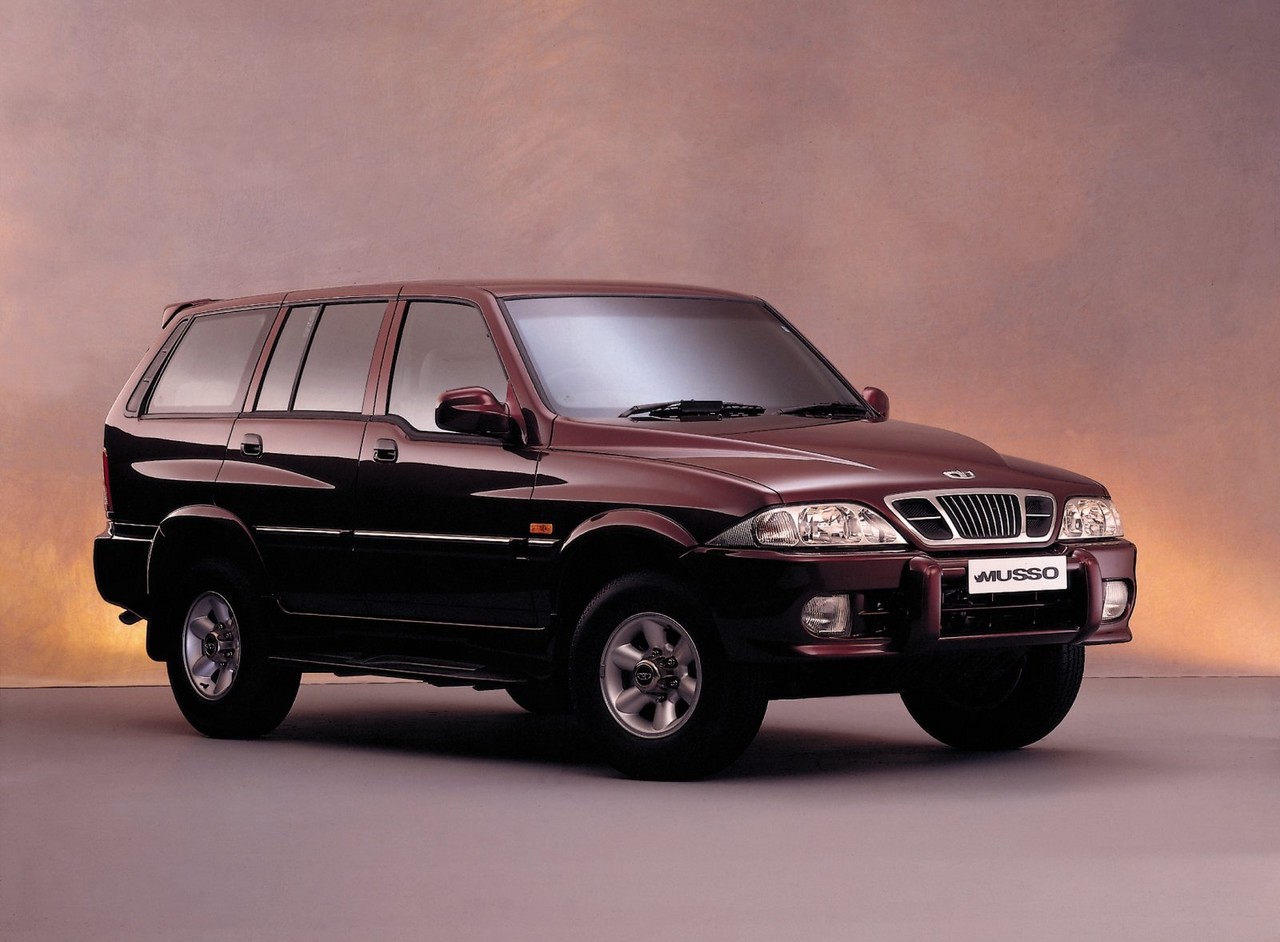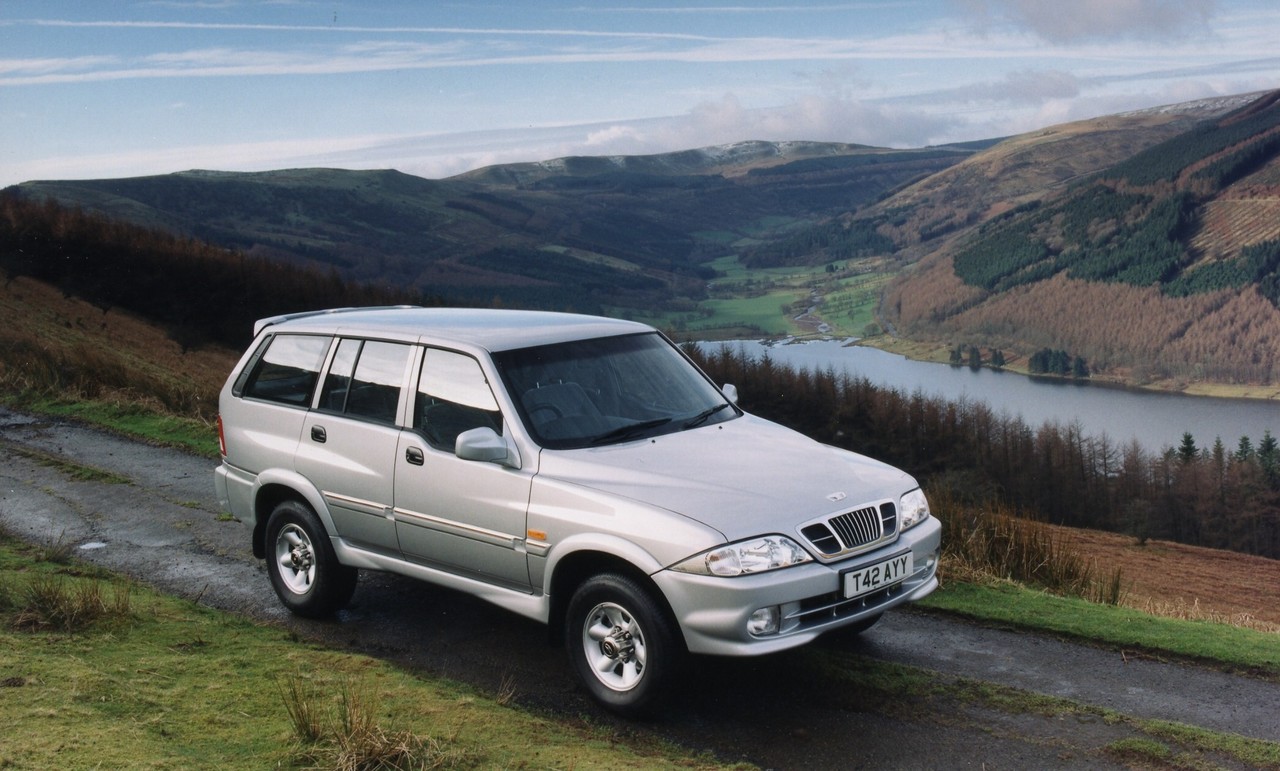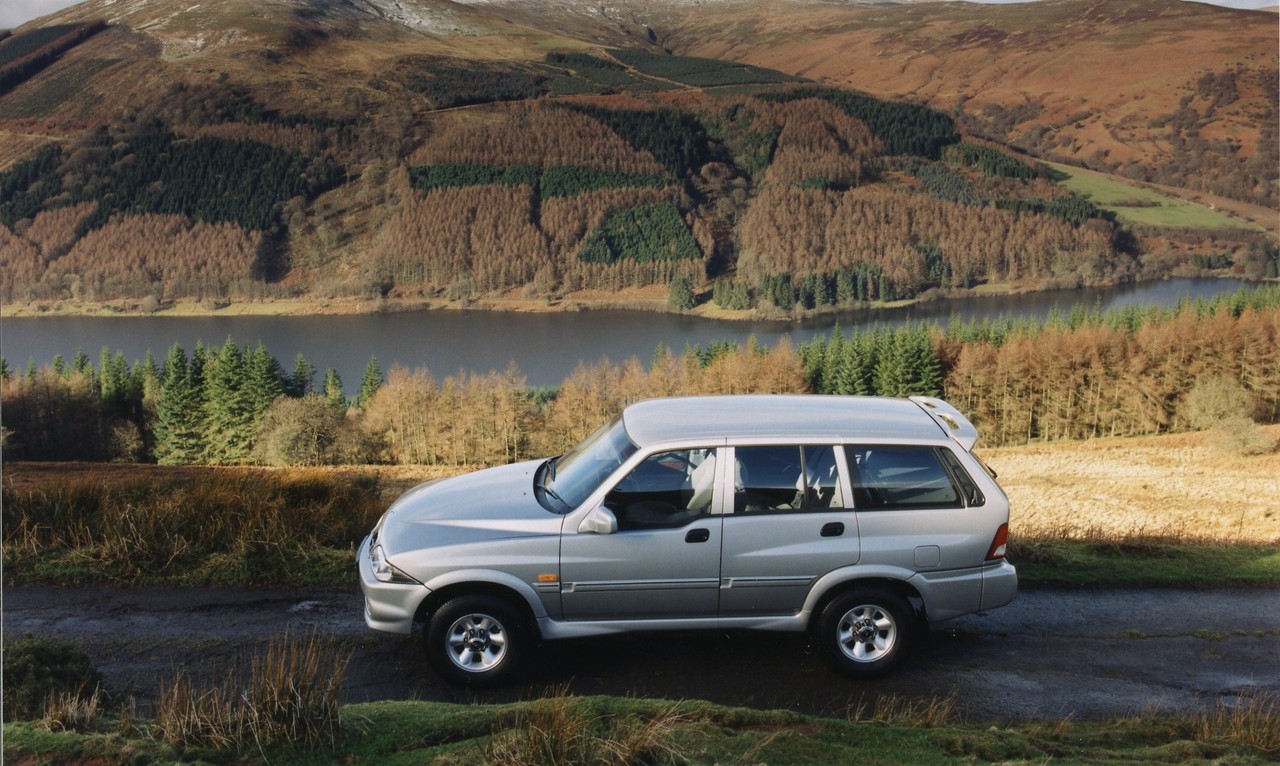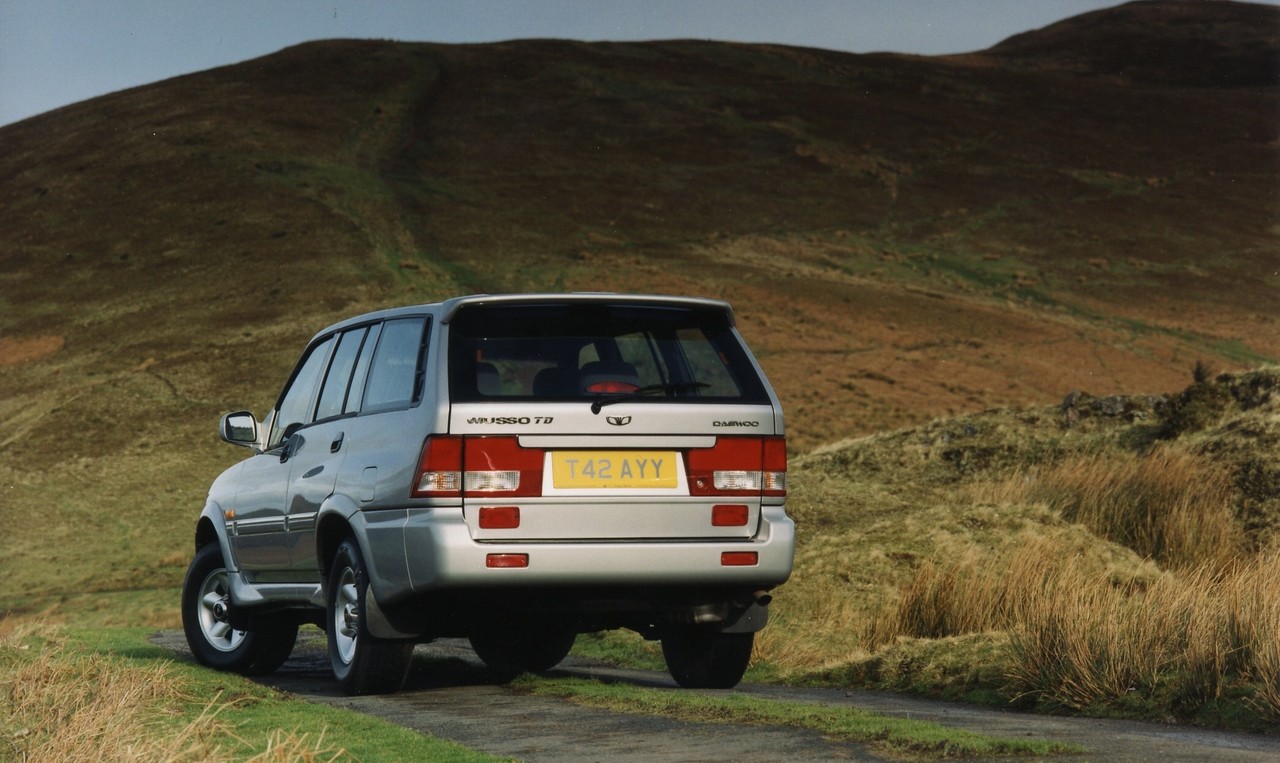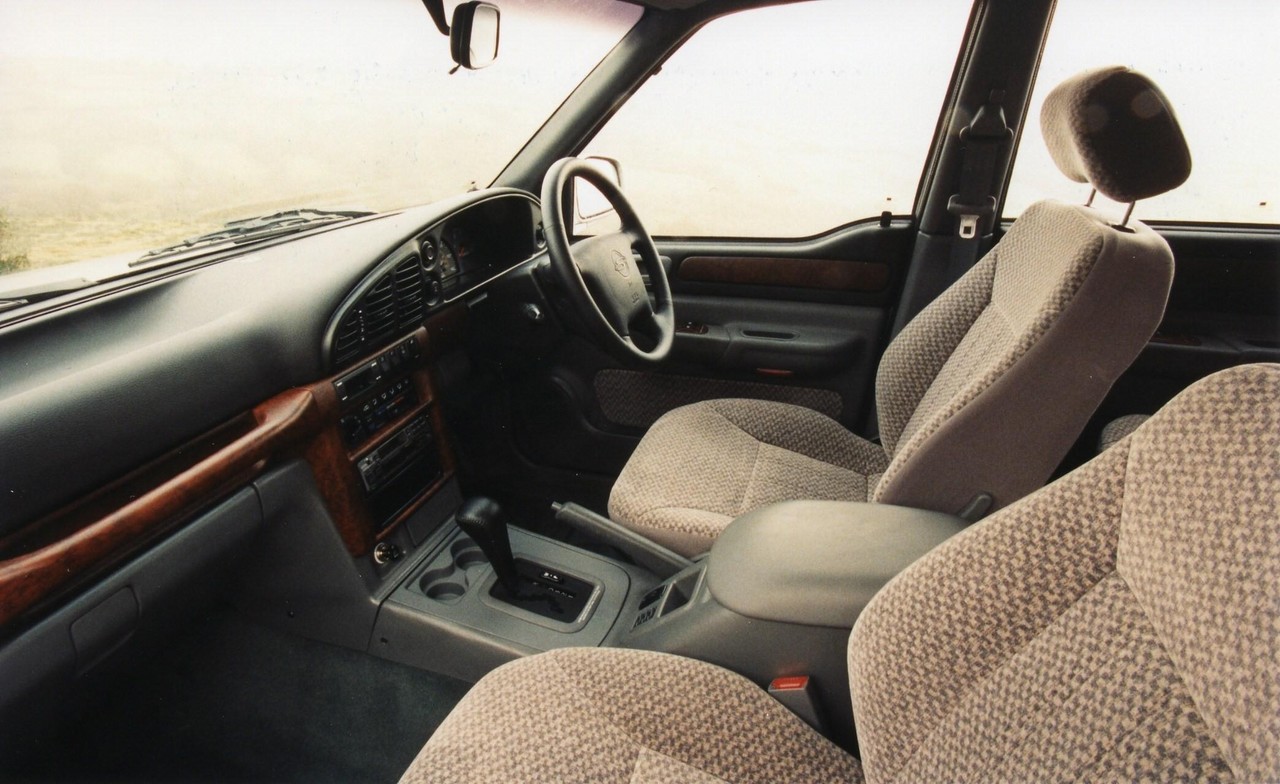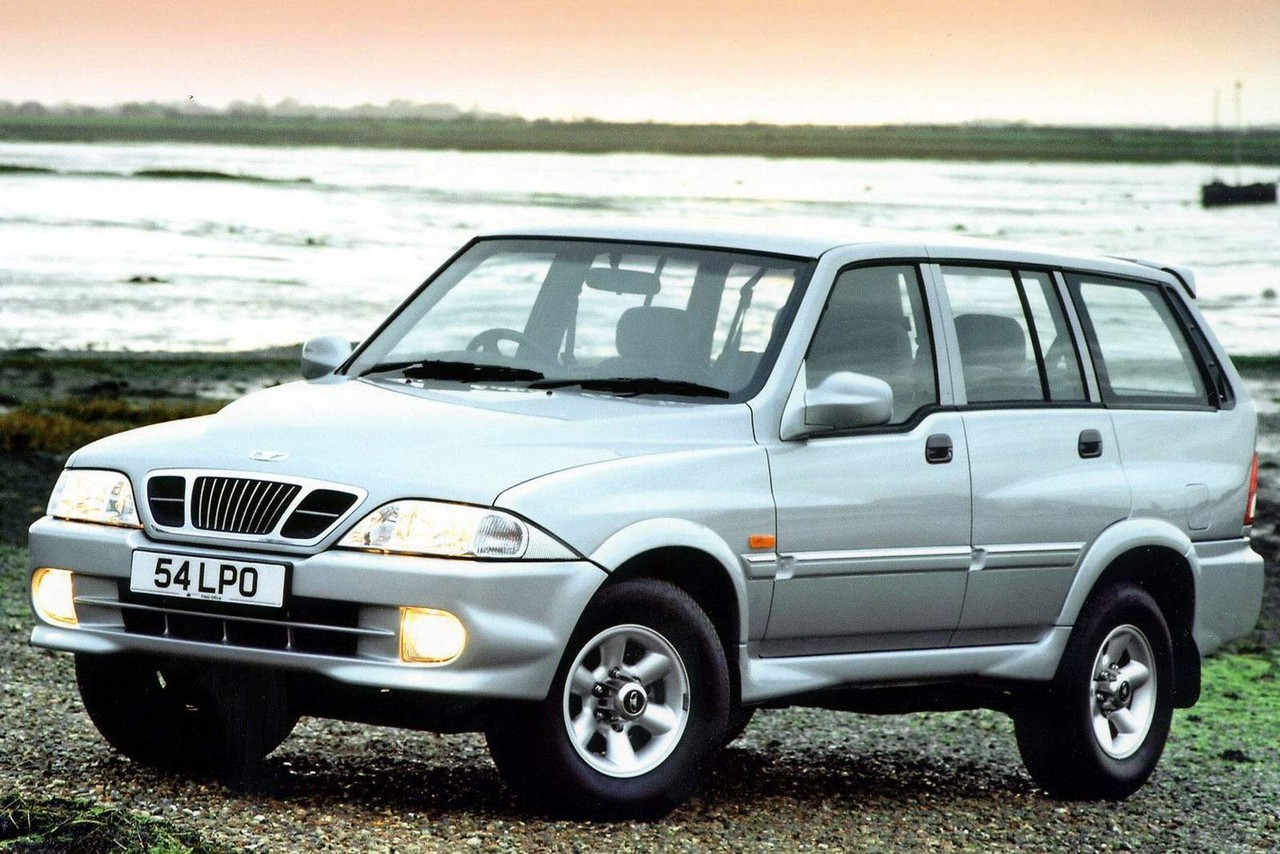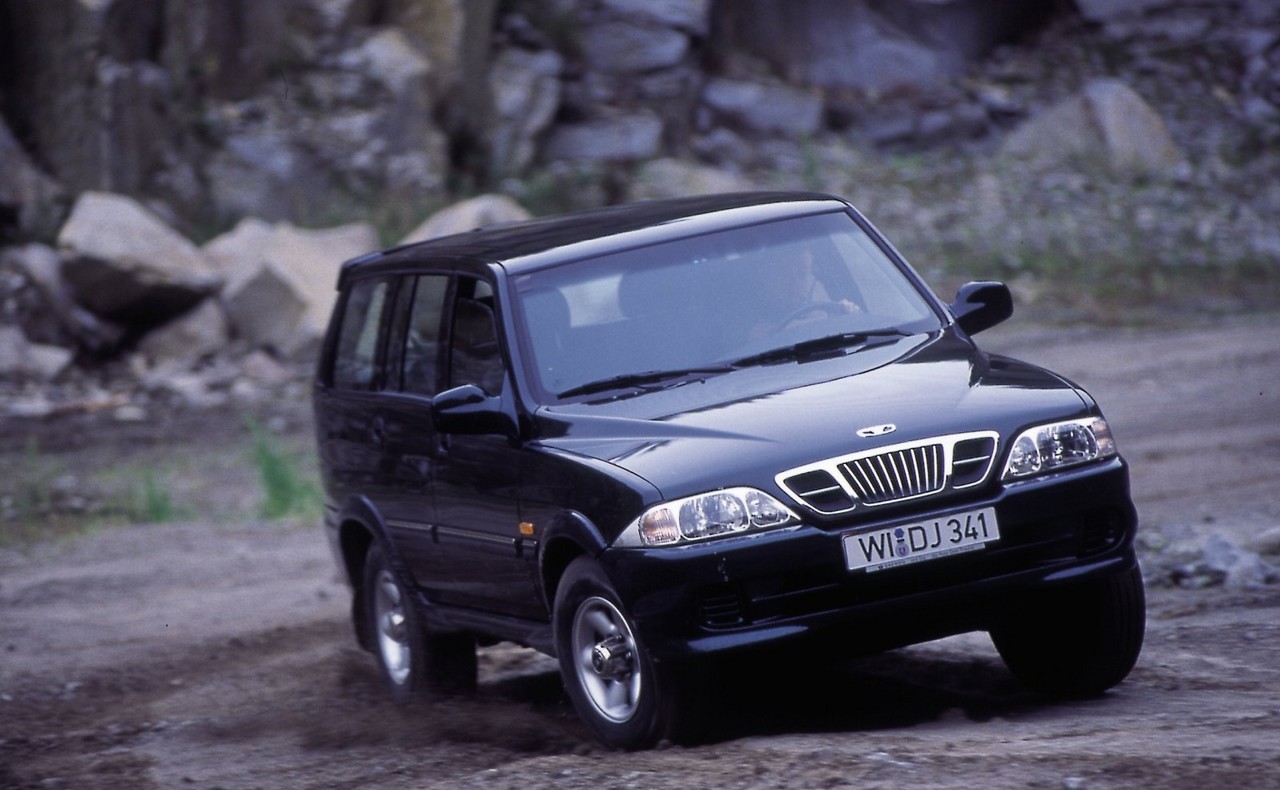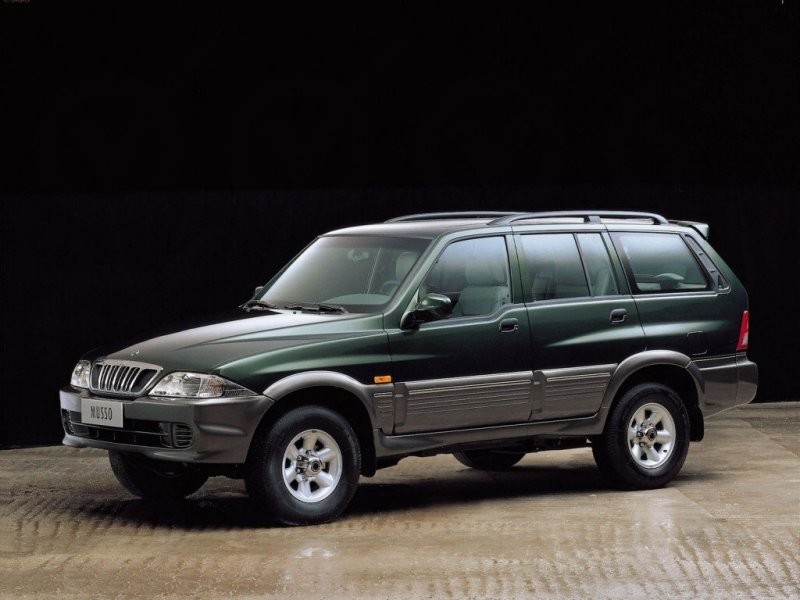
- Refined and durable 3.2-litre V6 petrol engine
- Spacious interior and boot
- Competent dynamics
- Off-road capability (though limited by ground clearance)
- Firm ride
- Cheap interior plastics
- Turbo-diesel engine is sluggish and harsh when accelerating
- Difficulty sourcing replacement parts
Review: Daewoo Musso (1998-02)
Overview
Released in August 1998, the Daewoo Musso was a mid-size SUV. Manufactured in Pyeongtaek, South Korea, the Musso was available with two distinct engine and drivetrain combinations as models with 2.9-litre turbo-diesel engines had a part-time four-wheel drive system, while models with 3.2-litre petrol engines had a full-time four wheel drive system (described below). Of these engines,
- The 2.9-litre OM602 turbo-diesel engine had a single overhead camshaft, two valves per cylinder and a compression ratio of 22.0:1 ; and,
- The 3.2-litre M104 petrol had double overhead camshafts, four valves per cylinder and a compression ratio of 10:1.
Both the OM602 and M104 petrol engines were designed by Mercedes-Benz and manufactured by Ssangyong under licence.
The Musso was 4640 mm long, 1905 mm wide, 1735 mm tall and had a 2630 mm long wheelbase; ground clearance was 195 mm. Furthermore, the Musso had double wishbone front suspension and a live-rear axle with five-links; a limited-slip rear differential was also fitted as standard.
Maximum braked towing capacity was 3500 kg for models with petrol engines and 2800 kg for models with turbo-diesel engines; unbraked towing capacity was 750 kg for both engines.
| Engine | Drive | Trans. | Peak power | Peak torque |
|---|---|---|---|---|
| 2.9-litre turbo-diesel I5 | Part-time 4WD | 5sp man., 4sp auto |
88 kW at 4000 rpm | 250 Nm at 2250 rpm |
| 3.2-litre petrol I6 | Full-time 4WD | 5sp man., 4sp auto |
161 kW at 5750 rpm | 310 Nm at 4000 rpm |
Part-time 4WD system: turbo-diesel models
For models with turbo-diesel engines, the part-time four-wheel drive system directed the engine’s torque to the front-wheels in normal conditions. However, the all-wheel drive system could be engaged at speeds of up to 70 km/h via a rotary switch on the dash. If all-wheel drive was engaged when the vehicle was in motion, the high-range gears would be engaged; if engaged when stationary and in neutral, however, the low range gears would be engaged.
Full-time 4WD system: petrol models
For models with petrol engines, the four-wheel drive system had a viscous center coupling to control slippage between the front and rear shafts, with a planetary-gear transfer case mounted behind the transmission. In normal conditions, the front/rear torque split was 35:65; a loss of traction, however, would cause the viscous coupling to lock and provide a 50:50 front/rear torque distribution.
Safety equipment
Standard safety equipment included a driver’s airbag. The Musso was also fitted with a ‘Load Conscious Reducing valve’ which could alter the distribution of braking forces for reduced stopping distances.
Features
Standard features included 15-inch steel wheels, a four speaker sound system with a CD player, air conditioning, a leather-wrapped steering wheel, power windows and heated mirrors, telescopic steering wheel adjustment, remote central locking and immobiliser. The petrol models were further equipped with 15-inch alloy wheels and a six speaker sound system.
April 2001: Musso update
In April 2001, the Musso was updated and new BTR automatic transmissions were introduced. Standard features were extended to include an upgraded six speaker sound system (with front door tweeters) with a CD player; automatic petrol models were also fitted with cruise control.
Visually, the updated models could be identified by their new grille, six-spoke alloy wheels and two-tone paint finishes across the range. Inside, there was a redesigned dashboard, centre console, cloth trims and cargo cover.
Related links
